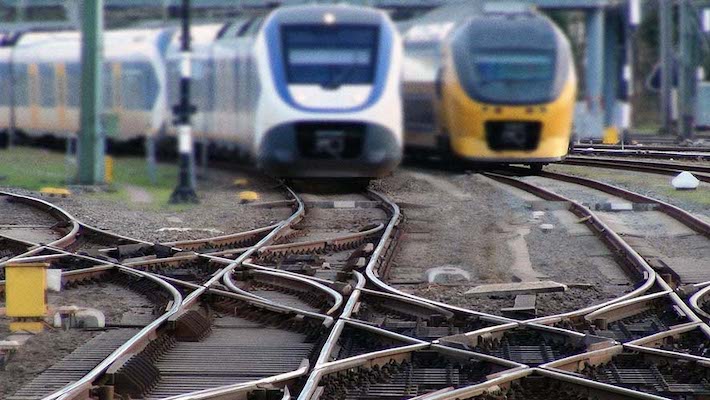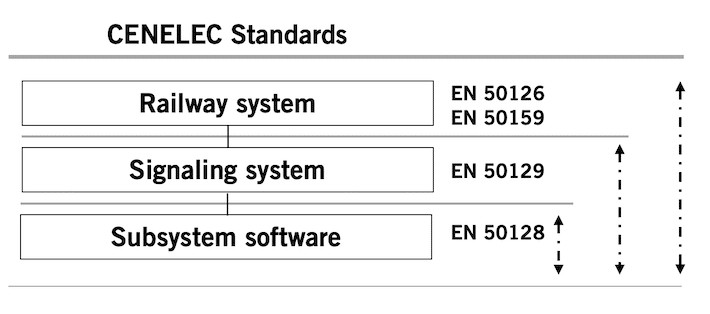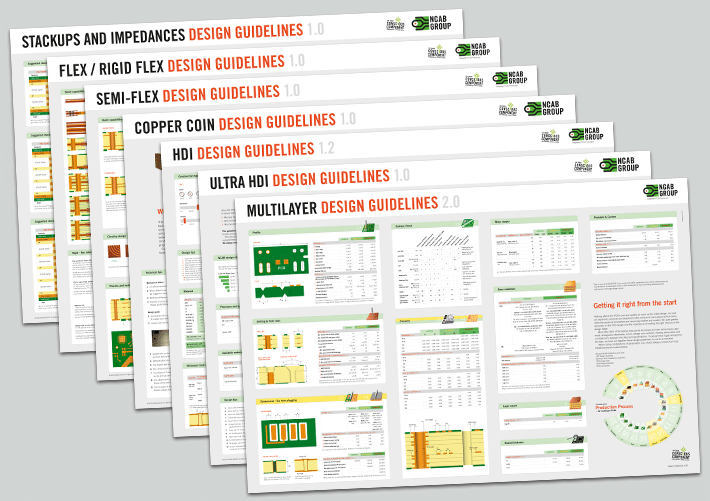When designing an application for the railway sector, there is a set of regulations and considerations that should be considered. In this blog post, we’ll outline some of these regulations, for example IEC 61508 and CENELEC, and the set of standards that should be followed.

In general, when a PCB designer faces the challenge of creating a printed circuit board for a railway application, the common regulation for the design of the railway application that one should refer to is UNE-EN 50124-1 – The European Standard. However, given the high reliability required for most railway applications, another fundamental standard is to be considered: IEC 61508 – An international standard published by the International Electrotechnical Commission.
Regulations for railway applications
IEC 61508 Regulations
IEC 61508 provides functional safety standards for the lifecycle of electrical, electronic, or programmable electronic (E/E/PE) systems. Two of those standards being:
- Specific architecture requirements to comply with SIL (Safety Integrity Level)
- Methodology for obtaining FCC (Federal Communications Commission) compliance. They do not consider the concept of Fail Safe.

There are three fundamental principles in IEC 61508:
- Zero risk “can never be achieved.”
- Non-tolerable risks must be reduced.
- Security management must be considered from the beginning.
This regulation is, in turn, the basis for other standards that apply to the railway sector, such as CENELEC.
CENELEC Regulations
CENELEC (European Committee for Electrotechnical Standardization) is responsible for European standardization in the areas of electrical engineering. Together with ETSI (telecommunications) and CEN (other technical areas), it forms the European system of technical standards. Although it works actively with the European Union, it is not an institution of the EEC.
CENELEC’s work is fundamentally based on IEC (International Electrotechnical Commission) publications, although their own standards are also prepared by CENELEC technicians.
CENELEC is divided into three standards:
- 50126 (IEC 62278) deals with the standard safety regulations within a railway system: Life cycle and its phases (requirements, design, manufacturing, validation, etc.), organization and roles necessary to comply with security, RAMS concept (Reliability, Availability, Maintenance and Safety), of a railway system, Command, Control and Signaling (safety management).
- 50128 (IEC 62279) deals with safety software management (SW) in railway control and protection systems. Equivalent to the generic one, but for the SW (it does not have any RAMS, which is more of the HW). This standard can be applied to Railway Applications and Railway Control and Protection Systems.
- 50129 (IEC 62425) deals with system safety of electronic railway equipment. It complements 50126 and more aspects related to HW and programmable logic such as FPGAs (Fine-Pitch Ball Grid Array). For example, to identify and make a system safer and justifiable.
Within the CENELEC standard, there is another important standard to keep in mind, (apart from those for electromagnetic compatibility, environmental tests: temperature, vibrations), and that is the insulation coordination (50124-1). This applies precisely when designing PCBs in terms of insulation between conductors of different guards between metal surfaces, and tests to verify compliance.
How are these three CENELEC standards (50126/28/29) different?
50126 applies to all railway systems, 50129 is specific for signaling systems, and finally 50128 is the one to consider for programming software subsystems.

Therefore, as a PCB designer we can say that the specific reference standard for the design of printed circuit boards for railway applications would be EN 50129.
Standard EN 50129
It is a specification that includes the following aspects:
- Technical Security:
- Design description
- Principles of technical safety
- Guarantee of correct operation:
- System architecture and interface definition.
- System requirements compliance with security requirements.
- Guarantee of correct HW and SW operation.
- Effect of breakdowns:
- System behavior under faults.
- Operation under external influences:
- Climate, mechanical, electrical, and more severe conditions.
- Application conditions related to security:
- System configuration, manufacturing, operation, and maintenance.
- Security monitoring during maintenance, system decommissioning, and reporting of results.
- FMEA (Failure Mode and Effect Analysis) Systematic evaluation of failure models:
- Inductive method: bottom-up, HW Systems (processes for failure modes (understanding “Failure” as a loss of functionality), causes and effects), identifies the “single-point” of failure.
- FMEA results in aid design improvements, testing and risk analysis.
What is the importance of applying the CENELEC regulations correctly?
The application of this regulation facilitates access to international markets, achieving greater competitiveness, and saving both money and time by discovering errors before the PCB is manufactured.
The key is to apply the standard from the beginning of a design
The fact is that in order to facilitate the implementation of a PCB in a railway application, the CENELEC standard must be taken into account from the first moment that a new design is started. Some common good practices to keep in mind from the start are:
- Structure the schematic properly. Grouping the logic blocks and the inputs and outputs to minimize connection tracks, thus largely avoiding resistive and capacitive parasitic effects.
- Apply later to the layout of the PCB, selecting the right track width sufficient to allow the passage of the maximum current that will circulate through them. The minimum separation between tracks will depend on the tension they have to withstand.
The local offices of NCAB have a technical team of engineers with the capacity to provide advice on the design of PCBs both in aspects of efficiency, manufacturing technology and sustainability, as well as in compliance with regulations in highly demanding sectors or applications such as the railway or other similar.
This is knowledge derived from the experience accumulated in a trajectory of more than 30 years, the presence in 15 countries and the annual production volume of more than 360 million PCBs for high-requirement applications.
More about the railway industry and PCBs
Learn about the important standards for fire and safety that have to be applied when producing PCBs to the railway industry:

PCB design guidelines
Get it right from the start with our PCB design guidelines. To prevent getting it wrong from the start, we have put together our design guidelines, to use as a checklist.
